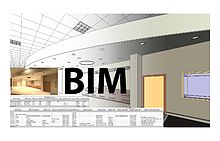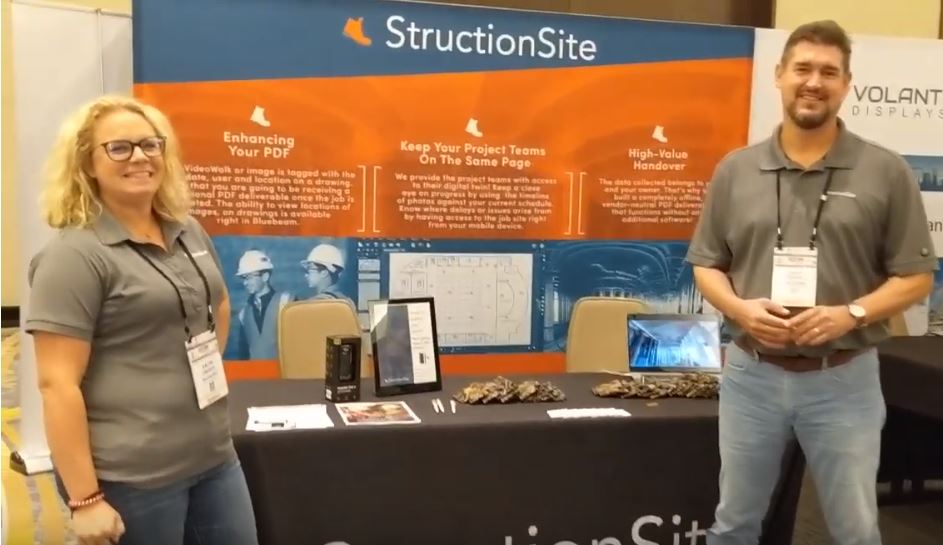- Professional Construction Software Solutions
- 480-705-4241

Federal Construction Contractors and the OFCCP Audit
December 3, 2010
Bing Loves Facebook
January 3, 2011Today we’d like to welcome a Guest Post from James Benham, president of SmartBidNet and JBKnowledge who has graciously contributed his time and expertise to share this article with our readership. I met James in Phoenix last year when he was the speaker for a construction association dinner meeting and we have been friends (and admirers of each other) ever since.

In simple terms, Augmented Reality (http://en.wikipedia.org/wiki/Augmented_reality) is the process of using technology to overlay virtual imagery and data on top of real world images (either through a camera enabled device, sunglasses, a transparent display or contact lenses). For the sake of this discussion Augmented Reality is the result of the convergence of several key technologies now available on the open market:
● Precise 3D models
● Mobile devices with the following components:
– Gyroscope
– Accelerometer
– GPS receiver
– 3G/4G Data connection
– Multi-touch interactive displays
– Front and rear facing high resolution cameras
– Light sensor
– Proximity sensor
– Audio sensor
– High resolution display
● Accurate satellite imagery
● Accurate street-level imagery
● Precise Geographic Information System (GIS) data
With the advent of all of these technologies put together into portable devices like the iPhone and iPad, not to mention Android based solutions like the Galaxy class phones and new Galaxy Tab, data now meets visualization in a way never imagined. The devices, combined with their data, allow the user to take a BIM (http://en.wikipedia.org/wiki/Building_Information_Modeling) model and render it in 3D on top of real world images.
To make this more useful, the display of these items is moving from a portable device to more usable devices like windshield displays of construction equipment, sunglasses and even contact lenses. This means that with increasingly accurate data, models, hardware and displays, the BIM models that estimating departments put together can be shipped to the field for use by the people actually performing the work. Below are a few examples that best illustrate the use of 3D models for various construction tasks like client walk-through, remodel designs, field reviews, and earthwork. In one of my recent talks (http://www.jamesbenham.com/presentations/) an electrical subcontractor immediately asked after my talk if he could buy glasses for his workers that would overlay the electrical plans on everything they saw when they walked into a construction site. While this is not available yet, you can expect this type of technology to come on the market in the near future. And for those of you sci-fi fans out there, yes, this is RoboCop and Terminator coming to real life!
Videos (special thanks to VTT Technical Research Centre of Finland):
Multi-touch display used as a navigation tool in a 3D environment:
http://www.youtube.com/watch?v=2tjtOdyl9a4
Augmented Reality display of a building on a construction site:
http://www.youtube.com/watch?v=rVt86NGXQv4
Augmented Reality in Virtual Furnishing:
http://www.youtube.com/watch?v=xsJfTFcY-1U&feature=related
Earthwork with Augmented Reality:
http://www.youtube.com/watch?v=yiDnlhxs1os
The important take-away is that the new technologies that seem to not apply to all parts of construction, have significant ramifications when they come together. Who would have thought, 5 years ago, that 3D construction models could be overlaid on a real construction site thru the use of specially designed sunglasses connected to the phone in your pocket?
The question really is how far these technologies will pervade the every day life of the average construction worker, from a project supervisor, to an estimator to the CFO. My favorite quote I heard recently from a General Contractor at one of my talks is “I got into construction because you didn’t have to be a rocket scientist, only to find out that now you have to be a rocket scientist to be in construction.”





4 Comments
This is pretty cool stuff. The contractors I deal with, small to medium size, mostly remodeling contractors probably don’t have the need for, and the resources to purchase these technologies. At least today.
I would imagine that in a few years, assuming the industry recovers, it will be available to even the smallest contractor. The question then will be “how do we use it for modest sized remodeling jobs?”
Thanks for this information.
Nick,
Good question. Google is helping us here with a few different technologies that enable you to do this for even the smallest project. Google Sketchup (link below) allows the user (you) to build 3D models for free (that’s right, free). You can even import TIF files of your plans and trace on top of them to get a model built to scale. Manufacturers are even jumping into the game by providing 3D model libraries of their products to be included in your 3D model. And you can count on Google rolling out augmented reality apps integrated with their mobile platform (android). A company called Igloo offers great training for sketchup (link below – go-2-school.com). Thanks for the question!
http://go-2-school.com/
http://android.com
http://sketchup.google.com
– James Benham
[…] Carol Hagen provides a good overview here […]
[…] Carol Hagen provides a good overview here […]